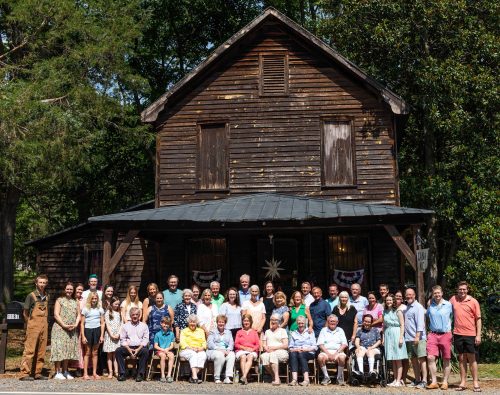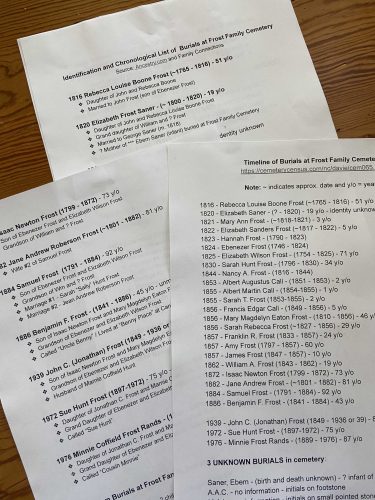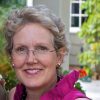This post was written by Nancy Sullivan, describing her genealogical work learning more about family through cemeteries research.
Family history comes to us in various ways, often originating with the telling and retelling of stories by our elders. As youngsters we absorb what we hear, and that history becomes a part of us…deep etchings in our brains. As we grow older, the stories will sometimes pique curiosity which sends us digging to uncover the mysteries that are hidden or forgotten with the passage of time. In this blog post, I will explain how my brain was deeply etched as a child, and how I took the unusual deep dive I did as an adult.
First, some history about my history. My family has long been rooted in Davie County, Piedmont Region of North Carolina. My mother grew up on ancestral lands that date back to 1762, where her grandfather and father operated a general store (built 1875) and her mother served as postmistress (1919-1954) for their rural community. My mother and her five siblings collectively had 19 children, and my cousins, siblings, and I heard many wonderfully rich family stories thanks to our family’s deep roots and longevity in one community. If asked, I’m certain there would be 19 different perspectives on the stories we heard, but for me, the stories seemed to begin with my great grandfather’s Civil War service and culminated with the closing of the family’s general store in 1964. This century’s worth of information was plenty for my youthful brain to take in, so as a child I considered this the sum total of my family’s history.

Fast forward to 2020, the arrival of the Covid pandemic and my ability to seize both time and opportunities while at home. One day I made a trip to the history room of the Davie County Public Library in Mocksville, N.C., and quite by accident, was introduced to the Cemetery Census Project supported by the Davie County Historical and Genealogical Society. I’m not sure why I found this interesting since the pages of the census only showed a bunch of familiar surnames with birth and death dates, but I departed the library on that sweltering hot summer day in search of two unfamiliar Davie County cemeteries where I could find relatives.
Searching up and down the overgrown cemetery rows, I located the weather-worn gravestones of my ancestors. I found this oddly moving… There was a voice that kept telling me that, figuratively, “digging up bones” could maybe reveal more of my family’s history.
I could not resist the challenge of researching how these burial listings wove into my family’s history and began by studying the Frost Family cemetery that is located on my family’s ancestral land. I had known about this cemetery, home to my grandfather’s ancestors, for all my life but nothing about who the 26 people buried in this small cemetery were.
I started by creating a chronological listing for the 26 individuals, whose death dates span 1816-1972. Once the cemetery timeline was complete, I began researching each person individually. I used the following resources: ancestry.com, findagrave.com, familysearch.org, Family Connections by Eleanor Cain Blackmore (written by my mother’s sister, who lovingly researched and compiled a family history), Frost Family Genealogy by Minnie Frost Rands, History of Davie County by James W. Wall, and The Frosts and Related Families of Bedford County, Tennessee by Wright Wilson Frost. These resources were hugely helpful and I was amazed at what was available to me as I sat at my computer!

In addition to the obvious resources, there was one resource that was totally unexpected. The North Carolina Baptist Church Records at ZSR Library Special Collections and Archives include records of two Davie County churches, Eaton’s Baptist Church (founded 1772) and Bear Creek Baptist Church (founded 1792). From the digitized records, I learned my ancestors were charter members of these two churches. My etched brain knew my ancestors as cornerstones of the church. As I dug into these records, I found that yes, they were charter members BUT the records also showed, “Ebenezer Frost being further examined by the Brethern and no apperance of Repentence the Brethren thought proper to Excommunicate him out of fellowship the next Lords day” [sic] ! Luckily, I found Ebenezer Frost “made a full acknowledgement of his faults, and was received into fellowship again.” I learned about baptisms in Dutchman Creek, struggles within the congregation, the impact that weather had on the church, and the strong actions the church took against occasional wayward folks in the community. It was rewarding to see a slice of life for my ancestors that many genealogical journeys could not reveal without the preservation of such records.
Over time, I pulled together the identities and lineages for all 26 people buried in the Frost Family Cemetery. My next challenge was how to present this information so it could be easily understood. A narrative approach was going to be problematic for me to keep straight, and would also be painful for anyone that might be interested in this project, so I decided on a visual approach. I created family charts that showed the lineage of each person in the cemetery and how these generations fit into my family’s history.
I could breathe a sigh of relief for completing what I set out to do. I felt I could pack up the papers that I had accumulated and retire from my cemetery life. But there was a voice and a lingering question I could not let go of: what about my grandmother’s ancestors? The family history of this project had focused solely on my grandfather’s lineage, and I knew only a miniscule amount about my grandmother’s family. Obviously, this was not the time to stop my efforts! I sharpened my pencil and continued digging, for the entirety of my grandmother’s and grandfather’s families.
I’m now at the end and can stand back to look at the big picture of this cemetery project. Over the months – years! – of research, I was able to document 200 years of family history (1770s-1970s). I researched 8 church cemeteries. I identified and “met” members of 5 families and 15 generations of my grandmother’s family, and 4 families and 12 generations of my grandfather’s. This genealogical journey brought clarity to the stories etched in my brain, and I know my families’ histories beyond my expectations. I gained an appreciation for the generations of individuals that have been woven together to create the fabric of my family. What a tremendous privilege to be able to find my relatives and to move the needle of familial history forward.

4 Comments on ‘Digging Up Family Bones’
Thanks so much, Nancy, for sharing your genealogy story–we are very glad to serve as a repository for much of your family’s history!
Another great read from Nancy Sullivan. No one makes genealogical research more interesting and relatable than Nancy. Who wouldn’t want to “meet” 12-15 generations of family? It makes me want to “Dig Up Family Bones”!
Oh, Nancy. This was just a wonderful article. It makes me want to get back to my search. There is just nothing more fascinating. What a gift you have given the descendants. I am not sure anyone who has not done this can appreciate the time it has taken. Well done!
Thanks for sharing your research experiences and use of Baptist collections, Nancy!